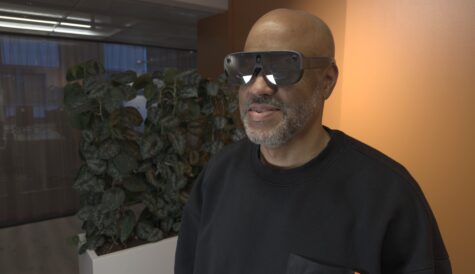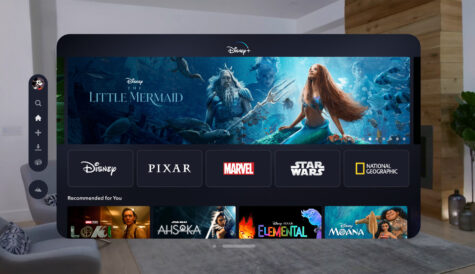
After more than 40 years of operation, DTVE is closing its doors and our website will no longer be updated daily. Thank you for all of your support.
Google hails AR ‘the next big shift in mobile’ as new SDK is launched
Google’s launch last week of its augmented reality SDK, ARCore, together with the existing Apple equivalent, ARKit, could give a massive boost to help bring AR experiences to the mass market, Mobile World Congress attendees heard yesterday, as Google claimed that AR will be “the next big shift” for the mobile industry.
 Google’s SDK has now been released from beta as ARCore version 1.0.
Google’s SDK has now been released from beta as ARCore version 1.0.
ARCore currently works on 13 smartphone brands – Google’s Pixel, Pixel XL, Pixel 2 and Pixel 2 XL; Samsung’s Galaxy S8, S8+, Note8, S7 and S7 edge; LGE’s V30 and V30+ (Android O only); ASUS’s Zenfone AR; and OnePlus’s OnePlus 5 – with others to follow, including devices from Samsung, Huawei, LGE, Motorola, ASUS, Xiaomi, HMD/Nokia, ZTE, Sony Mobile, and Vivo.
ARCore 1.0 features improved environmental understanding that enables users to place virtual assets on textured surfaces like posters, furniture, toy boxes, books, cans and more, according to the company.
Speaking at Mobile World Congress, Adrienne McCallister, director, global VR/AR partnerships, Google, said that the internet giant believes “AR is the next big shift in mobile devices”.
McAllister said that Google has now teamed up with Huawei, Xiaomi and Samsung to distribute AR apps on their stores in China.
She said that ARCore currently works on about 100 million devices, and that the company is working with manufacturers to bring AR experiences to their new devices.
Google recently partnered with Porsche and Sotheby’s to bring AR experiences to their customer respective customer bases.
Dave Ranyard, CEO of AR and VR games developer Dream Reality, speaking on the same session as McAllister, said that ARCore from Google and ARKit from Apple will broaden AR to a huge installed base on smartphones. These developments will reduce barriers to entry, he said.
Ranyard said that the introduction of the new VR kits removed many of the barriers to entry that have previously held AR back.
More functions are coming to ARKit and ARCore that will enable the creation of AR walls and enable multiplayer interaction, he said.
However, Ranyard cautioned that there are still barriers to entry to be overcome. His company is still playing in the premium space, competing with the plethora of free games, and users have to keep their mobile OS up to date, which not all do, he said. The third barrier to entry is lack of awareness of AR. Having to physically walk about and interact with the real world as part of the experience is still confusing to many people, he said.
However, these are “soft barriers to entry”, said Ranyard, who added that AR also has a much larger potential installed base of devices than VR to target.
Ranyard noted that AR/VR specialist Magic Leap is shortly to bring out its AR-capable glasses, Magic Leap One, that can be wirelessly connected to users’ phone and will interact with these. “It’s great using your phone for AR but it is an interim step to this,” he said.
Separately, McAllister said that Google is working with Lenovo on a Mirage solo standalone VR headset to complement its Daydream View lightweight mobile VR headset, that would allow users much more freedom of movement.
Immersive VR video accounts for half the time people spend in Daydream, she said. Google Daydream is currently investing in original productions around the NFL in partnership with YouTube, and has also partnered with Austin City Limits to give enhanced coverage of concerts.


